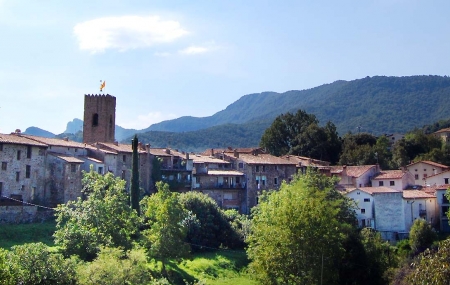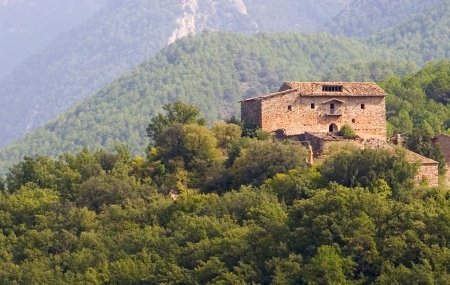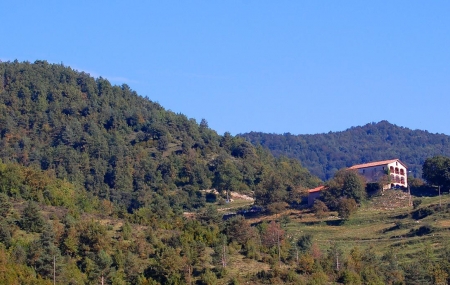Walking among volcanoes in La Garrotxa
The extraordinary area in Northern Spain called La Garrotxa is one of Catalonia's natural wonders. If we had to choose one exceptionally beautiful and unspoilt natural area in Spain, the entire Garrotxa region would be a strong candidate.
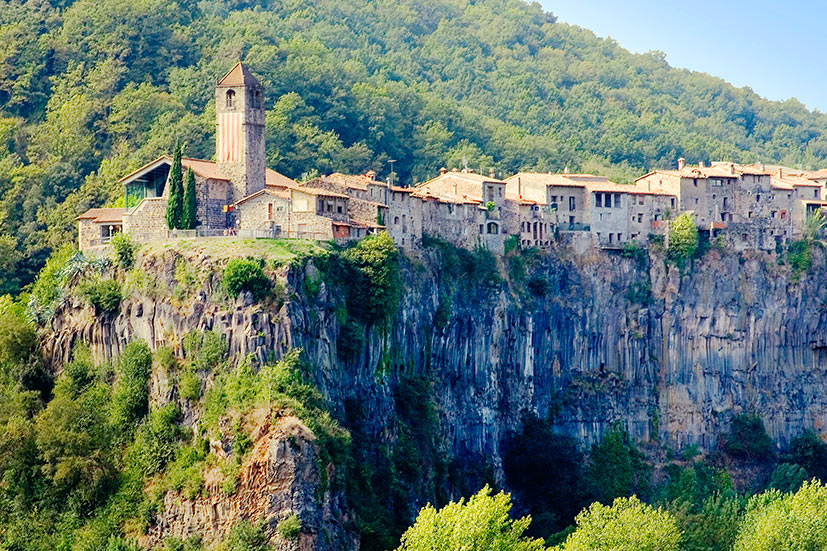
This is a special area that has achieved a successful and even prosperous balance of cattle rearing, tourism and complementary services.
The once volcanic region of La Garrotxa has one of the most striking and important volcanic sceneries in the whole of Europe, with as many as forty extinguished volcanoes now furred with vegetation.
While High Garrotxa offers a rugged scenery with numerous rocky valleys, Lower Garrotxa, south of the Fluvia river, has vast plains extending from the outskirts of the many volcanoes.
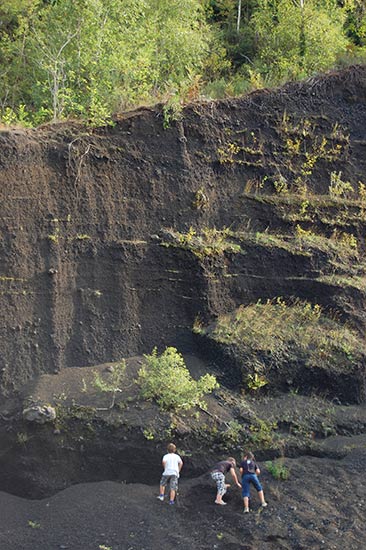
Photo: kids playing with solidified lava at the foot of Croscat volcano.
Even if the area has plenty to offer in terms of nature, open-air activities, culture and gastronomy, it would be well worth a visit for the walks alone: with plenty to explore, it is the ideal destination for hiking lovers. The signposted network of trails in La Garrotxa Natural Park offers walks suitable for all levels of fitness and it is a great way to discover some of the region's most beautiful and interesting spots.

Other than locals, not many people have heard of a cascade called Salto del Molí dels Murris. It is one of the best-kept secrets in Les Planes d'Hostoles, the Lower Garrotxa village where you can find it.
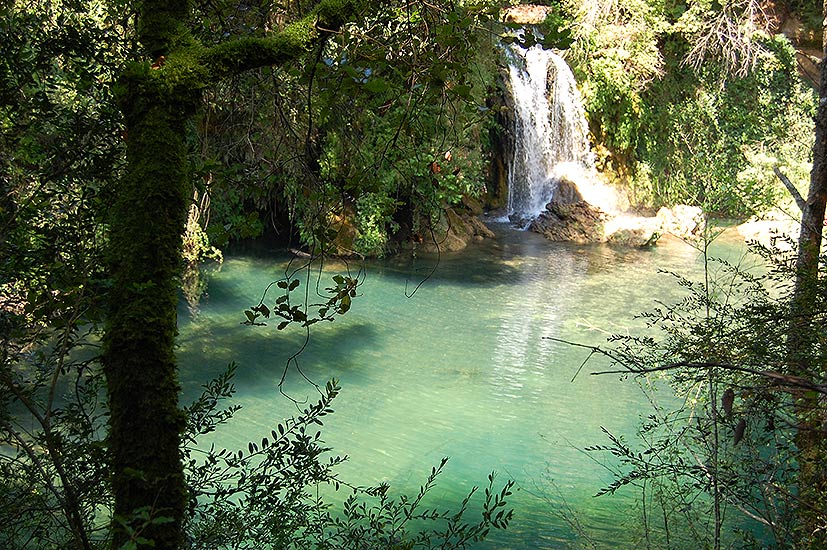
Photo: wild swimming spot at Moli dels Murris (GPS coordinates: 42°04'20.6"N 2°32'29.9"E)
El Carrilet route is a wonderful opportunity to enjoy great views walking or by bike: it runs from Olot to Girona, using the itinerary of an old train between them, and the opportunities for stopovers in charming villages or joining other signposted routes from here are countless.
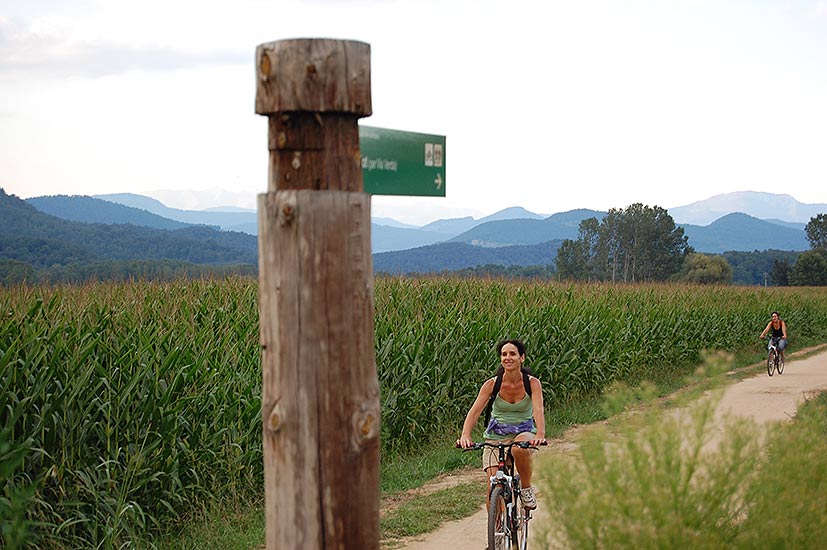
Photo: riding on hire bikes near Olot on the well known Carrilet.
Another remarkable walk is the route up to Sant Miquel del Mont. At the summit, 792-meters high, Romanesque church of Sant Miquel del Mont awaits, as well as a trig point to confirm you've made it.
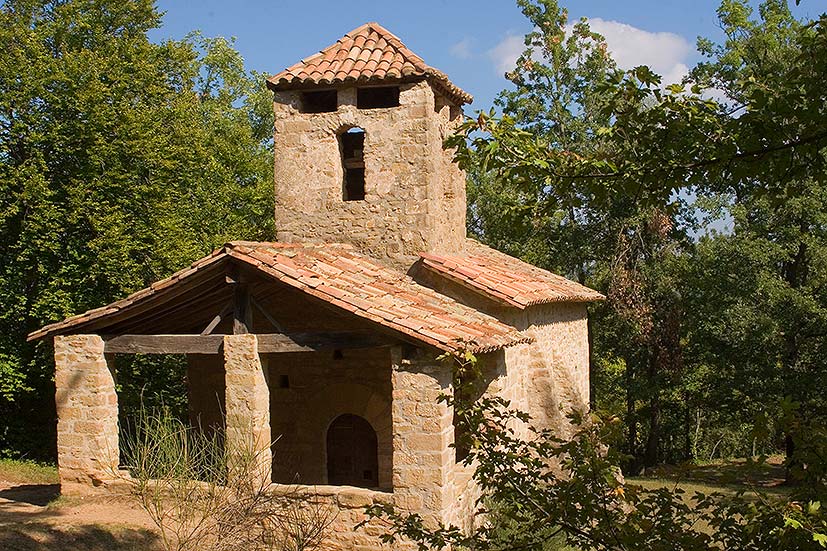
Photo: one of the many beutiful Romanic chapels you find when walking in Garrotxa.
La Fageda d’en Jorda beech forest is not just fantastic for signposted routes on foot, but also by bike and even horse-drawn carriages. So there are no excuses for missing this magic spot:
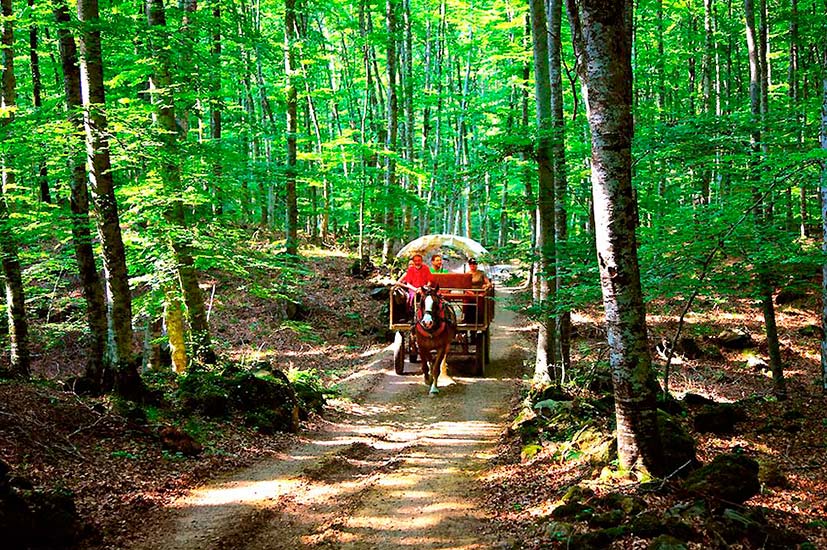
The beautifully preserved village of Santa Pau is as impressive as the six-kilometre lava flow left by its volcano, El Croscat.
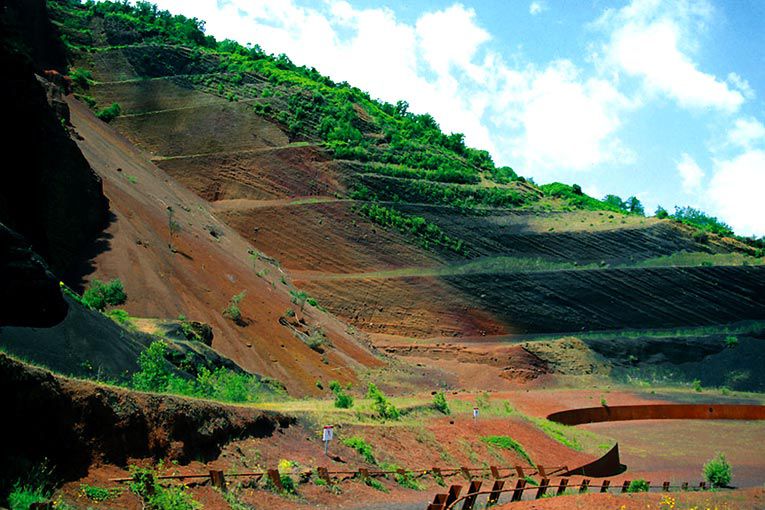
Photo: visiting the interior of Croscat volcano
Walking around the totally spectacular and singular Castellfollit de la Roca is an unforgettable experience: this narrow village was raised on 50-metre high cliffs of volcanic lava that poured forth thousands of years ago.
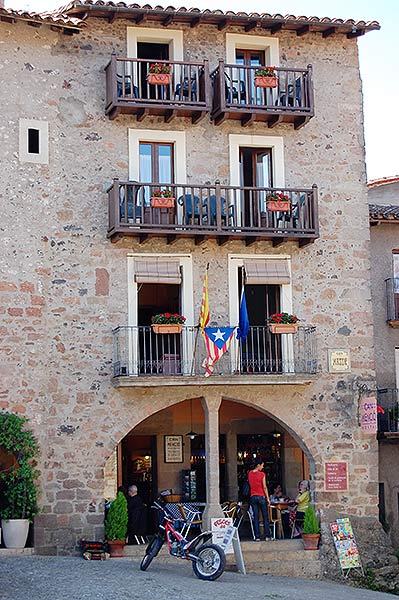
Photo: Santa Pau village
Open-air activities in La Garrotxa do not just include rural landscapes to explore down the trails and discover the most interesting of corners, but also horse riding, cycling, paragliding, golf, rowing, wild swimming, and even hot air balloon rides for the adventurous types.
The Vall d'en Bas valley, with its little pretty Romanesque and mediaeval villages, is irresistible: don't miss charming mediaeval Besalu, one of the most valuable heritage spots in Catalonia, and its famous and extraordinary bridge. Olot, the regional capital, is replete with history and museums.
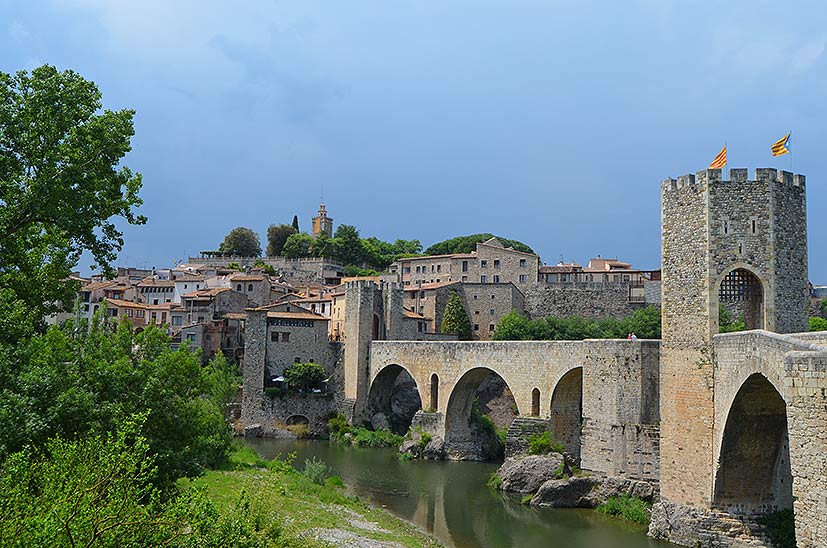
Photo: mediaeval Besalu village
Gastronomy always plays a significant part in any successful holiday and Catalonia is not a destination that is going to disappoint food lovers.

As mentioned in our Catalonia Holiday Guide, this is Spain at its most sophisticated. Where Andalusia might have supermarkets, Catalonia is likely to have delicatessens replete with local produce and specialities.
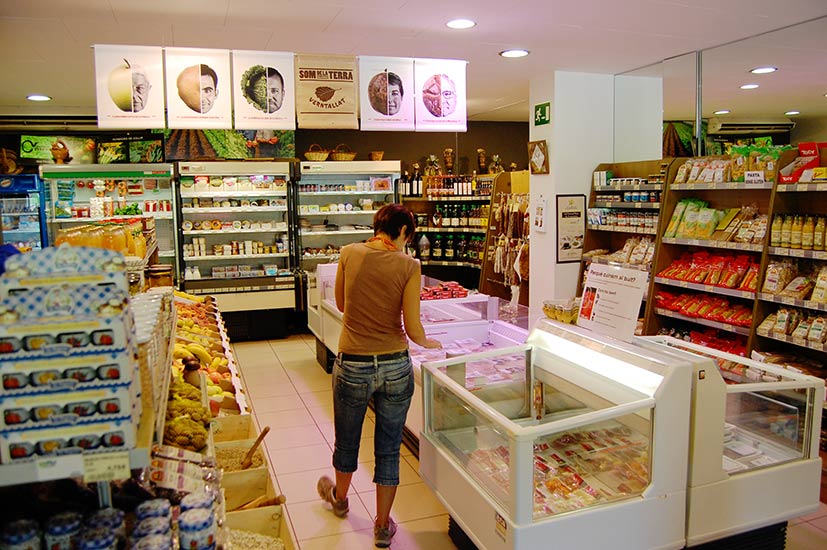
Photo: deli shop in Les Planes village
Culture and nature merge in the so-called volcanic cuisine in La Garrotxa, where the fertile soil provides excellent local produce that's been put to good use in the area's long history of culinary tradition. Must-tries of the much touted volcanic food and its autochthonous recipes include patates d'Olot (Olot potatoes, a sort of delicious stuffed potatoes), tasty Santa Pau beans with Catalan butifarra sausages, stewed snails, and just any dishes seasoned with local black truffle, a typical condiment of volcanic food locally referred to as "black diamond".
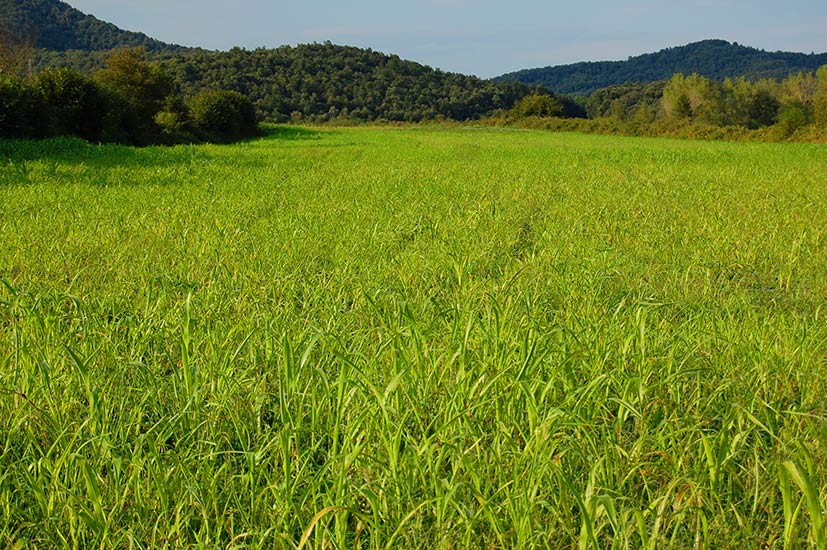
The opportunities for scenic and cultural tourism represent a serious motive for choosing La Garrotxa as your next holiday destination. Some will want to venture into the fabulous landscapes of La Garrotxa, which offer some of the best and most unusual trekking options we have ever come across. Others may be drawn to the art, architecture and history in the local medieval villages and churches, where they will find themselves spoilt for choice.
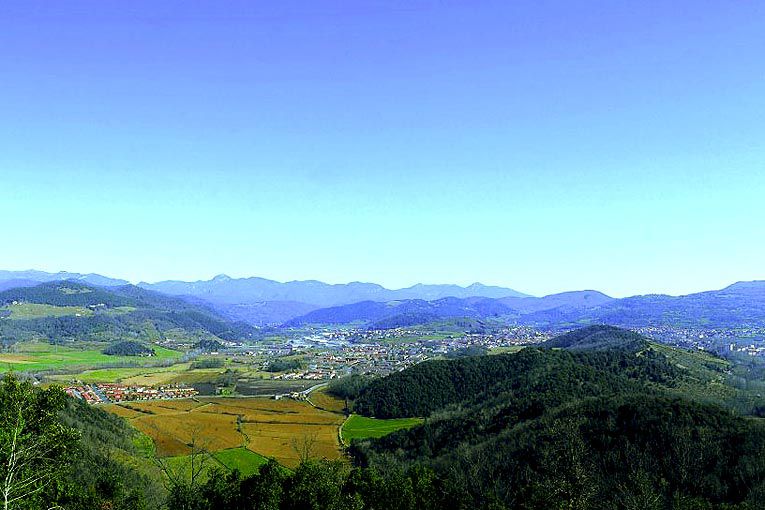
Reasons to come to La Garrotxa are so many and good that this review could go on forever, but take our word for it: this is one of those places where people look especially healthy and the environment along with the local gastronomy may have a lot to do with that.

Photo: cattle at the foothill of Santa Margarida volcano.
We are sure you will come away with renewed energy!



